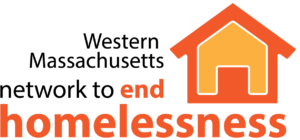Unaccompanied Homeless Youth Committee Meeting Minutes – 12/11/17
In attendance: Emily English, Gandara Center, Rosemary Fielder, Thrive HCC, Lisa Goldsmith, DIAL/SELF, Rebecca Guimand, STCC, Sharon Hall-Smith, Gandara Center, Charlie Knight, Rainville, Yeisie Mateo, DCF, Gerry McCafferty, City of Springfield, Rebecca Muller, Grantworks and Gandara, Juan Rivera, DYS, Pamela Schwartz, Network, Jennifer Wands, Springfield Public Schools
This meeting focused on learning more about DCF and DYS and how each agency intersected with unaccompanied homeless youth. Towards that end, we learned from Yeisie Mateo, DCF housing specialist, and Juan Rivera, DYS Holyoke District Office. Below are some highlights of the conversation:
Yeisie Mateo, DCF:
Yeisie is the housing specialist for all of Western MA. She focuses primarily on families with small children and consults with youth ages 18-24. There are very few resources to refer to and she is eager to learn of additional resources.
Young adults can sign on with the department for services (DCF can serve youth ages 18-24 years old). There are roughly 75-90 consultations with young people each month, all in Western MA. Case management generally translates into establishing goals and providing assistance in finding employment or going to school. Many young people who have been part of the foster system want nothing to do with it once they turn 18. A young person can choose to stay in the foster home after reaching 18 if the foster parent will allow it. Young people who find an apartment (very difficult to find and afford) can receive a small stipend.
If a young person leaves home at 16 or 17, they generally are not effectively in the custody of DCF in which case they are not eligible for services.
The group discussed the prospect of promoting greater engagement with DCF through building collaborations with community based partners and greater acesss to housing.
Juan Rivera, DYS:
Juan outlined the various treatment programs and capacities of each. Young people are committed up to age 18 or 21 if involved with juvenile court. The young person is assessed and the judge determines length of stay at various centers, generally 3-5 month stays.
• Springfield Residential Treatment program – secure setting – run by CHD – 16 beds
• Girls secure treatment detention setting – Tinkham Road – CHD – also a revocation unit for young women who are not compliant – 12 beds
• Community adolescent treatment program – Worthington St – step-down, short-term stay 3-5 months – track 2 – more access, technically in the community – 12-14 beds
• Our House – residential treatment in Greenfield – Key Program – track 2 program – more access to community, going to school, etc. 12-14 beds
• Westfield Youth Service Center – for boys – revocation unit, bail unit, stabilization unit, higher offenders, higher risk individuals 27/30 – reassessed
• Tom Gruccialternative options – 14 – Gandara
• Independent Living Program – West Springfield CHD – contract with CHD – 12
DYS operates on positive youth development model with a strong clinical component. 90 days before returning to the community, discussion begins around re-entry, appropriate support services, etc. Services are in place 30 days prior to discharge.
At 18, youth can leave or can sign on to Youth Engagement Services (YES) up to 90 days after discharge. Entirely voluntary. Western MA has the most young people YES (75-100). If they don’t sign on they are given resource packets and referrals.
Bridging Opportunity Gap (BOG) is a partnership with community orgs, e.g, NEFWC, Community Action.
DYS District Manager is Lorrie Bobe (already on committee email list). Juan is here on her behalf and will check back in with her following this meeting.
Next steps:
· Gerry will invite Catholic Charities to next meeting to gain better clarity about how to access their resources
· Yeisie will invite DCF Adolescent Supervisor Peter Meade
· Gerry will follow up with Yeisie (how many homeless youth are seen) and Lorrie (#s committed, in YES, in Track 2) to gain better sense of numbers; in general our goal is to get as clear a picture as possible on the numbers of homeless youth because the more we can quantify the need, the better position we are in to bring resources to the table.
· We want to identify the points of entry in and out of homelessness within the various systems and the points of connection and resources among community agencies to get youth on the path to stable housing and financial self-sufficiency.
Budget advocacy: Gerry will follow-up with EOHHS to gain a better understanding of how FY18 youth program funds are being allocated.
Next meeting: Tuesday Jan. 9, 2:30-4:00 pm, HCC, Donahue Building, 368

